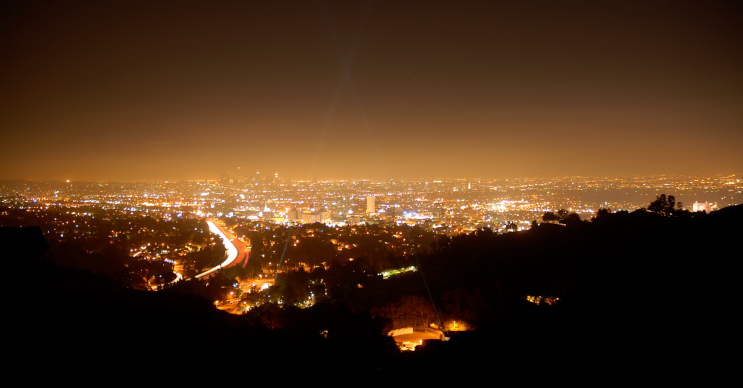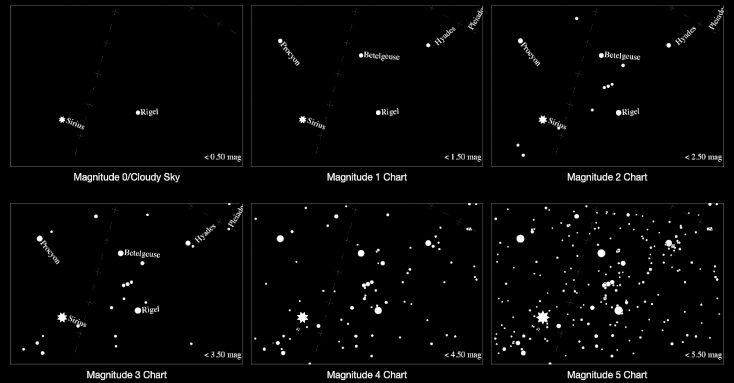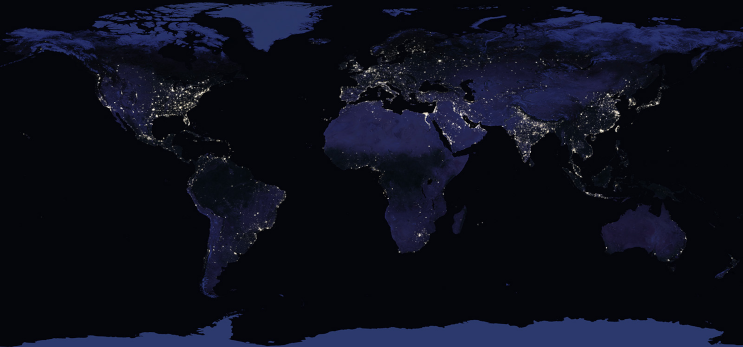Archives
June 2024
Categories
All
|
Back to Blog
Image credit: Mike Knell 959 words / 4-minute read When you hear the term "light pollution", what comes to mind? While it's actually a broad term encompassing effects both on the ground and in the night sky, most people think of it as the inability to see the stars at night. That effect in particular, called "skyglow", results from light emitted on the ground up toward the sky. That light scatters in the atmosphere, which redirects it back toward the ground. There it competes with starlight and causes the sky to look grayish and washed out. Thanks to research described in a new paper in the journal Science, we know that skyglow is increasing around the world at a stunning rate. The study, published in January, found the rate of increase is about ten percent per year when averaged around the world. Counting stars instead of lightsResearchers in Germany analyzed tens of thousands of observations made by citizen-scientists between 2011 and 2022 as part of the "Globe At Night" project. The organizers ask participants to first locate familiar constellations in the night sky. They present maps of those constellations showing differing numbers of stars to show varying degrees of skyglow. The participants decide among the charts which best matches their own local night skies. This provides robust estimates of night sky brightness that scientists can compare against other sources of data about light pollution. Globe At Night charts for the constellation Orion. To estimate the brightness of the night sky, participants compare these charts to the night sky from their locations and find the best match. The new work is the first large-scale analysis of the Globe At Night estimates. Until now, Earth-orbiting satellites provided the only global view of light pollution. Earlier studies involving satellite images concluded that light pollution on the ground grew at a much slower pace. A 2017 study concluded that the rate was around two percent per year in the first half of the last decade. Satellites flying blindThe new estimate in Science looks up from the ground instead of down from space, which may explain some of the difference. The satellites used to gather the night-lights data don't see blue light at all. They were not designed to make light pollution measurements in particular, so their onboard sensors aren't ideal for the job. Their insensitivity to blue light is a problem given how the color of light at night continues to change. Since around 2010, many cities across the world converted their stock of public lighting to new, white light-emitting diode (LED) technology. They did this in hopes of realizing major reductions in energy use and financial cost with these energy-efficient light sources. But white LED emits a lot more blue light than earlier lighting technologies. Satellites thus tend to under-count the amount of light at night they receive in space. That same blue light also scatters more strongly in the atmosphere than other colors. All other factors being equal, that effect explains in part why nights are getting brighter. A global composite view of the Earth at night in the year 2015 made from artificially colored orbital satellite data. The relative 'blindness' of satellites to blue light means images like this underrepresent the true extent of night lights on our planet. Image courtesy of NOAA/NASA. Besides to the color issue, satellites also miss some of the light directed upward from the ground because it becomes skyglow. Since they are above the atmosphere, satellites only detect light rays that reach them. Some of those rays never make it because they're redirected back down to the ground. So while ground-based observers saw their night skies brighten in the past decade, satellites recorded a much slower rate of change. Furthermore, some light sources emit in ways that makes it unlikely their light will be seen directly in space. Sources like lit windows of buildings and illuminated signs emit light toward the horizon. Those sources are among the most important contributors to skyglow, but very little light they emit gets to the satellites. And there is evidence that at certain hours of the night, those sources dominate light escaping from cities. Visual observers on the ground sense at least some of the "missing" light that satellites don't see. That way of estimating the brightness of the night accounts for both the increase in light emissions and a trend toward bluer sources. Citizen-scientists also extend the reach of light pollution studies. It's often easier to recruit them to count stars where they live than place light sensors in the field. That is especially true in very remote locations around the globe. Citizen science for global changeBut even considering that volunteers provided about 50,000 measurements in the preceding decade, the information is incomplete. Vast swathes of land contained no observers at all. That left scientists to make informed guesses in places like Africa, where satellites suggest night lights are increasing the fastest.
Although the study authors note that known methods of reducing light pollution yield reliable results, current initiatives aren't producing results. This concerns light pollution researchers and activists alike. Skyglow is one symptom of a larger problem involving overuse of artificial light at night. We know it has negative impacts on everything from wildlife to energy use, traffic safety, and more. It's about much more than whether we can see the stars at night. As more people realize the seriousness of the issue, governments are taking note. Countries like Mexico have recently classified light pollution as a form of environmental pollution. This can bring the mechanisms of existing environmental laws to bear on the problem. The failure to reduce light pollution has real and lasting effects on communities. Wasted outdoor light at night involves measurable social and financial costs. Yet the new study authors admit that these messages about light pollution might heard by governments if the data were better geographically distributed. More people participating in Globe at Night would improve the reliability of the results. If the number of participants increased by a factor of 10, we would begin to see trends on scales smaller than whole continents. As lead author Christopher Kyba said, "If we could do that, we would surely find places that are doing better than average, and we could try to figure out what they are doing right."
0 Comments
Read More
Your comment will be posted after it is approved.
Leave a Reply. |
 RSS Feed
RSS Feed



